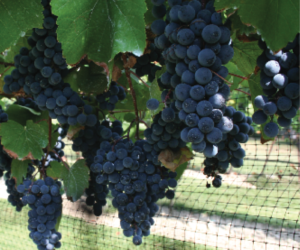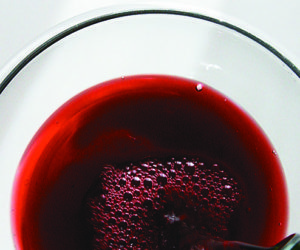All done using their energy to grow shoots, grapes and leaves, vines in the winter begin storing water prior to the first frost and then go into dormancy. That doesn’t mean those who look after the vineyard lay dormant though.
Peter Brehm is the owner of Brehm Vineyards and also grows grapes at his White Salmon Vineyard in Under-wood, Washington. He founded the retail shop Wine and the People in Berkeley, California.
It is critical to put vines to bed in good condition, well nourished, and early. This will depend on the amount of time between harvest and the beginning of the cold season. In the Northwest we can be harvesting after the first snow, in Sonoma it can be many weeks before serious frost and cold. Milder climates should provide the vines with water and nutrients for the winter nap. This should not stimulate new growth but make sure the carbohydrate reserves are plentiful in the trunk and roots.
In regions with early frosts and cold winters there may not be time for nourishment after harvest. It is important that the vines are hardened off and green wood has turned to tan/brown.
In light, sandy soils even the roots may be exposed to the cold. Years ago I recall a severe loss of Cabernet from the very cold winter. When the vines were removed it became apparent that the irrigation protocol had set up the loss. The sandy, desert soil was irrigated frequently for short periods of time. The vines, planted on their own roots, spread out horizontally for their nourishment. When winter was at the doorstep the irrigation stopped, vines were hardened off and put to bed. The extreme cold actually penetrated the dry sand and damaged the roots. While you do not wish to stimulate the vine to life the practice of keeping the soil moist has decreased the penetration of the cold. Irrigation protocol now tries to encourage the vines’ roots to go deep.
The best preparations for winter should take place before planting. The vine’s ability to survive where you wish to plant it is critical and often fades away in the desire to produce that wine of your mind. The site where you plant should not only match your porch’s view, but also have the soil, the soil depth and water resources to make the plant survive with minimal input.
Russ Funk is the Senior Winemaker at Carlos Creek Winery in Alexandria, Minnesota. He started working at the winery as a grounds keeper and grunt man for the winemaker while in college 14 years ago. Six years later the winemaker retired and Russ took over.
Our winters in Alexandria give us several -20 °F (-29 °C) days and maybe even a couple of days where it gets down to -30 °F (-34 °C). The varieties we grow here have been able to withstand those conditions without damage. But this last year the temperatures dropped below 0 °F (-18 °C) and stayed there for several days the first week of December. This initial drop in temperature must have been the damaging blow because we took cuttings for propagating the week before and all of those vines survived.
Everything we took after that was dead already.
Other than hope it doesn’t get too cold, we don’t really do anything in the vineyard during the winter in this region. We start pruning in mid-spring.
In the past we have sprayed KDL in the fall to give the vine a little extra nutrition going into the winter. But now that we’ve experienced 80% damage from last year’s winter we are going to try a product called Hytech Polymer, which is supposed to help the vine hold moisture through the winter.
If I had a small, home vineyard that would be more manageable, I would do things slightly different. I would put up a snow fence to drift as much snow on top of the vines as possible to help cover them and to build up snow cover to keep the ground cooler in spring to delay bud break. Or, if the varieties I were growing were more susceptible to cold temperatures I would lay them down and cover them with dirt and straw.







